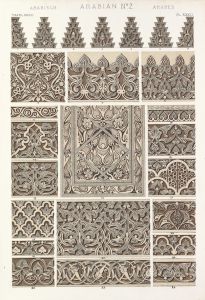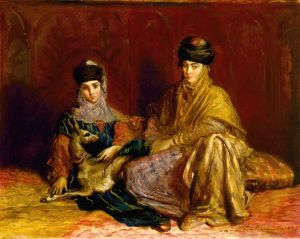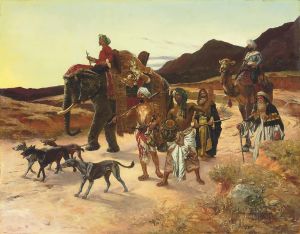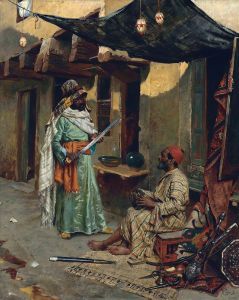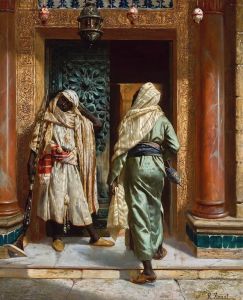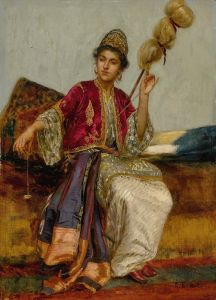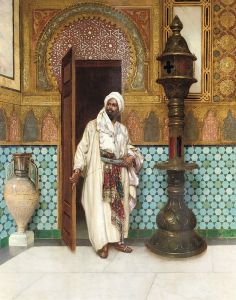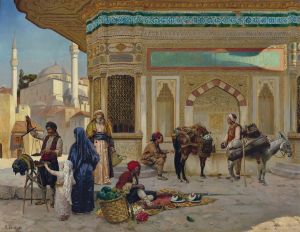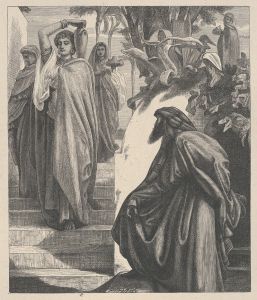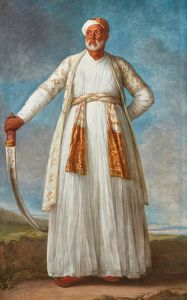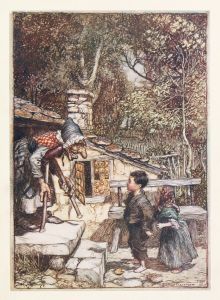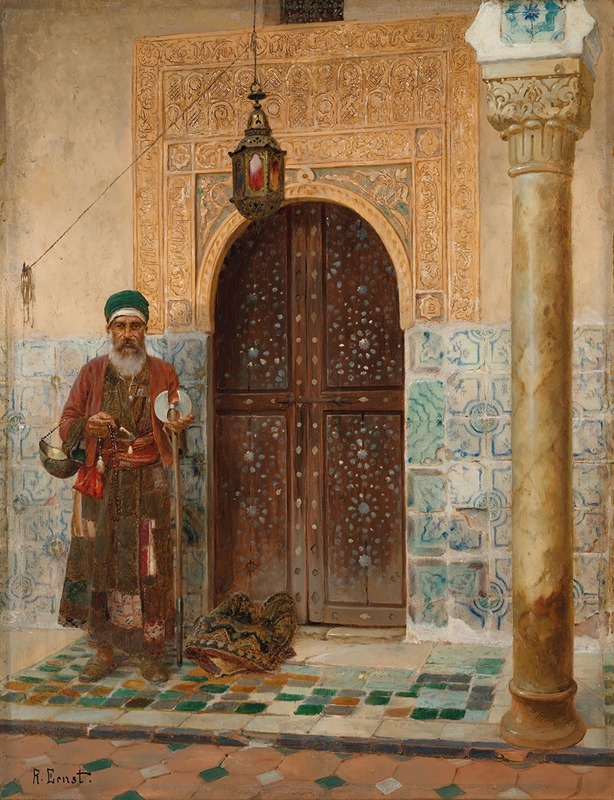
A holy man by an entrance
A hand-painted replica of Rudolf Ernst’s masterpiece A holy man by an entrance, meticulously crafted by professional artists to capture the true essence of the original. Each piece is created with museum-quality canvas and rare mineral pigments, carefully painted by experienced artists with delicate brushstrokes and rich, layered colors to perfectly recreate the texture of the original artwork. Unlike machine-printed reproductions, this hand-painted version brings the painting to life, infused with the artist’s emotions and skill in every stroke. Whether for personal collection or home decoration, it instantly elevates the artistic atmosphere of any space.
"A Holy Man by an Entrance" is a painting by the Austrian artist Rudolf Ernst, who was known for his Orientalist works. Ernst was born in Vienna in 1854 and became one of the prominent figures in the Orientalist movement, which was characterized by Western artists depicting scenes from the Middle East, North Africa, and Asia.
The painting "A Holy Man by an Entrance" exemplifies Ernst's fascination with the exotic and the detailed, vibrant scenes of daily life in the regions he depicted. This particular work portrays a holy man, possibly a dervish or a scholar, standing by an ornate entrance. The figure is dressed in traditional attire, which includes a long robe and a turban, emphasizing the cultural and religious aspects of the subject.
Ernst's attention to detail is evident in the intricate patterns and textures of the holy man's clothing, as well as the architectural elements of the entrance. The doorway itself is richly decorated, featuring elaborate carvings and possibly inscriptions, which are characteristic of Islamic architecture. The use of light and shadow in the painting adds depth and realism, drawing the viewer's eye to the central figure while also highlighting the craftsmanship of the surrounding elements.
Rudolf Ernst's works are known for their meticulous detail and vibrant color palette, which he achieved through his skillful use of oil paints. His paintings often reflect a romanticized view of the East, a common trait among Orientalist artists of his time. Ernst traveled extensively, and his experiences in places like Turkey, Egypt, and Morocco greatly influenced his artistic style and subject matter.
"A Holy Man by an Entrance" is a testament to Ernst's ability to capture the essence of a culture that was foreign to many of his contemporaries. His work provides a glimpse into the daily life and spiritual practices of the people he depicted, offering a window into a world that was both exotic and fascinating to Western audiences.
Ernst's paintings, including "A Holy Man by an Entrance," are part of various private collections and have been exhibited in galleries and museums around the world. His contribution to the Orientalist movement has been recognized for its artistic merit and its role in shaping Western perceptions of the East during the 19th and early 20th centuries.
In summary, "A Holy Man by an Entrance" by Rudolf Ernst is a fine example of Orientalist art, showcasing the artist's skill in capturing the intricate details and vibrant life of the cultures he portrayed. Through his work, Ernst offers a romanticized yet captivating view of the East, reflecting the fascination and curiosity of his time.





